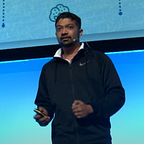Blockchain Blog 07: Inside the Blockchain Technology
The cheque above is 200 years old, we see that almost in every cheque few things are common:
1 — We have a date
2 — Name of the bank
3 — Where is the money going to
4 — Amount
5 — Where is money coming from
6 — A unique cheque number. And,
7 — Some stamps
So how do people keep track of how much money was made or spent? There was something like a ledger book. Where the records of the accounting details were noted down. So before we started computer this is how accounting details were taken on the ledger?
How expenditure details were taken?
Now the above example is the accounting details of a person.
Before computers, the accounting system of banks worked in a similar way, the records of transactions were stored, book after book, each new book had the continuous records of the previous books.
Imagine it like a chain of books formed by attaching one to another.
A ledger is a book or collection of accounts in which account transactions are recorded. Each account has an opening or carry-forward balance) and would record transactions as either a debit or credit in separate columns and the ending or closing balance.
In the space of Cryptocurrency and NFTs (Non-Fungible Tokens), a ledger is essentially a hardware wallet and is the most secure style of storing cryptocurrencies or non-fungible tokens. Now it is important to understand the ledger system of the blockchain if we want to understand the mining.
Mining is a process where blocks are added to a blockchain, verifying transactions. It is also the process through which new bitcoin or some altcoins are created.
Blockchain is to cryptocurrencies what internet is to email, or what land is to farmer.
Suppose the block below represents the ledger book that we saw earlier, the block has the accounting details of transactions that have taken place in cryptocurrencies. Let's say the block is the first block, which has the details of the first transaction, followed by the tons of other transactions, let’s call this block a genesis block.
A Genesis Block is the name given to the first block a cryptocurrency, such as Bitcoin, ever mined. A blockchain consists of a series of so-called blocks that are used to store information related to transactions that occur on a blockchain network. Each of the blocks contains a unique header, and each such block is identified by its block header hash individually. These blocks get layered — one on top of the other, with the Genesis Block being the foundation — and they grow in height until the end of the blockchain is reached and the sequence is complete. The layers and deep history of each sequence are blocks, this is one of the things that makes a blockchain-based cryptocurrency.
Blocks are effectively digital containers where data pertaining to the transactions on the network are permanently recorded. A block records some or all of the most recent Bitcoin transactions that have not yet entered any prior blocks. Thus, a block is like a page of a ledger or record book. Each time a block is “completed,” it gives way to the next block in the blockchain. A block is thus a permanent store of records that, once written, cannot be altered or removed.
The Genesis Block, also known as Block 0, is the very first block upon which additional blocks in a blockchain are added. It is effectively the ancestor that every other block can trace its lineage back to since every block references the one preceding it. This began the process of validating bitcoin transactions and introducing new bitcoins into existence. The Genesis Block had the 64 characters long hash address, to which another block was linked, and so on…
Now even if the single detail or the record of the genesis block was changed then it would have totally produced a new unique 64 characters long hash address. Do you know why? Well, the next block contains the details of the previous block as well as it has its own hash address. The hash address is generated using SHA256
The information in the blockchain is not just about the transactions of the money, it is about the more secure and transparent way of sharing information and contracts. The blockchain can have election data, contracts for sports, legal contracts, health-based data, historical data, or any digital art.
Blockchain is a technology making the shared registry concept from distributed systems a reality for a number of application domains, from the cryptocurrency one to potentially any industrial system requiring decentralized, robust, trusted, and automated decision making in a multi-stakeholder situation.
All the transactions on the blockchain are permanent unlike the old book ledgers, there are so many backups for blockchain transactions. Visit blockchain.com to see the transactions.
In the next blog, we will look at some interesting facts about the historic Genesis Block.
Join Coinmonks Telegram Channel and Youtube Channel learn about crypto trading and investing
Also, Read
- Remitano Review | Guide to 1inch Protocol
- iTop VPN Review | Mandala Exchange Review
- 40 Best Telegram Channels | Hi Dollar Review
- Fold App Review | StealthEX Review | Stormgain Review
- Buy PancakeSwap (CAKE) | Coinswitch Kuber Review
- WazirX NFT Review | Bitsgap vs Pionex | Tangem Review
- How to Create a DApp on Ethereum using Solidity?
